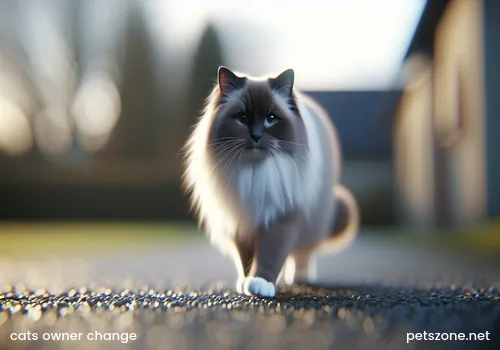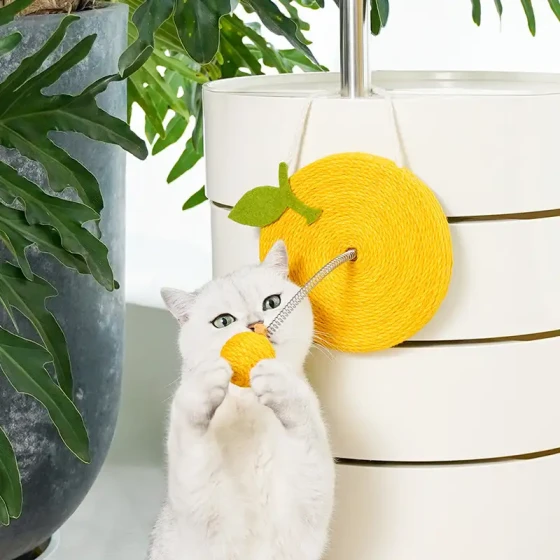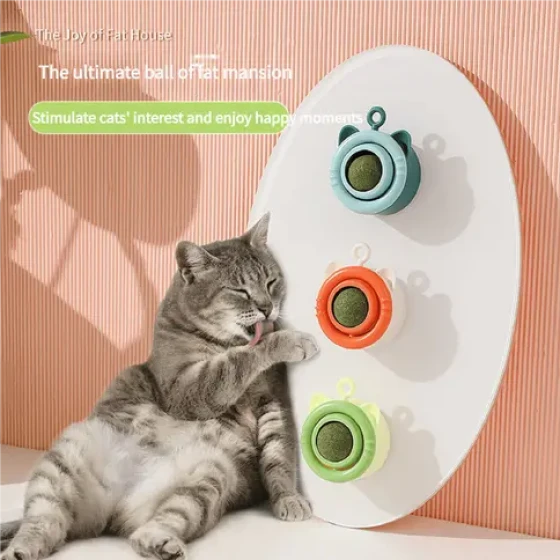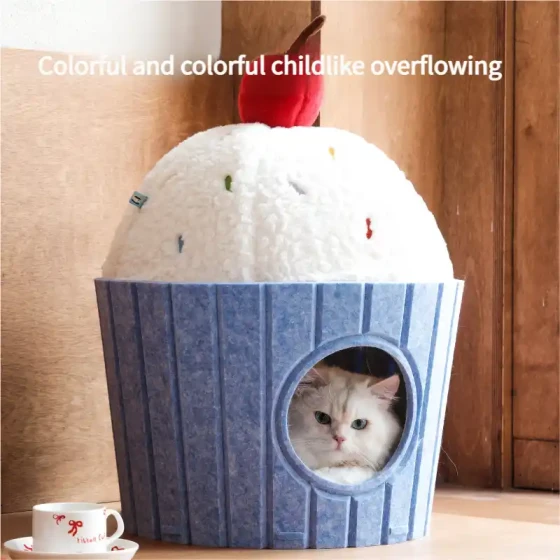Does the cat know it has a new owner_Cats can perceive the truth about owner changes
Cats do know when they have a new owner. They can distinguish their owner from strangers through various means such as scent, sound, vision, and daily interactions. When cats change to a new environment and new owner, they go through an adaptation process, showing signs of tension and anxiety, which is commonly called a “stress response.” Unless the time spent with the previous owner was very short, or the cat is still very young, cats usually can sense the change of owner.

How do cats perceive changes in their owner?
Cats do not recognize changes by understanding the concept of “owner change” like humans do, but by sensing differences in their senses and behavior.
- Scent identification: a cat’s “nose” is its “eye” Cats have a very sensitive sense of smell, much stronger than humans. They remember the unique scent of their owner and associate this scent with safety, food, and care. When the owner changes, the main human scent in the environment changes, which the cat immediately notices. Smelling a person’s scent is like “identity verification” for cats.
- Sound and tone: familiar “cat language” or stranger “alien talk”? Cats can remember and distinguish their owner’s voice. They can even understand some simple words, such as their own name or meal times. The new owner’s voice, manner of speaking, and frequency are different from the old owner, causing discomfort for the cat. Some cats can even identify who has come home based on footsteps.
- Daily interactions and habits: variations in life rhythm Cats rely heavily on a stable and regular lifestyle. Fixed feeding times, playtimes, and ways of interacting with the owner are all remembered by cats. The new owner’s lifestyle habits and interaction style (whether loving petting or more "laid-back") differ from before, and this change in daily rhythm allows the cat to sense the change of environment and people.
- Environmental change: adventure or scare in the new home? Changing owners often comes with environmental change, such as moving house. Cats have a strong dependence on their environment; a familiar environment provides them with a sense of security. The new home’s scent, layout, and sounds are entirely unfamiliar, causing great stress and triggering a stress response. Even if the new home is better, it remains an unknown world that the cat must explore and adapt to.
Common behaviors after cats change owners
When cats sense a change in ownership, they may display a series of behavioral and physiological reactions, all of which are manifestations of a “stress response.”
- Hiding: seeking a “safe house” Cats new to an environment often hide, such as under the bed or in cabinets, seeking a sense of security. This is a very common stress response; they need time to observe and evaluate if the new environment is safe.
- Loss of appetite: “neither tea nor food” Nervousness and stress can cause cats to lose their appetite, sometimes refusing to eat or drink for the first few days in a new environment.
- Vocalization: silent “protest” or seeking attention Some cats in a new home constantly meow, which may express anxiety, fear, or a search for the old owner or familiar environment.
- Behavioral changes: from “little angel” to “little devil”? Stress responses may also cause behavioral problems, such as inappropriate elimination, excessive grooming leading to hair loss, or even aggression. Some usually bold cats may become timid, while clingy cats may become distant.
- Physical discomfort: stress can also “harm the body” Severe stress reactions affect the cat’s immune system, possibly leading to health problems such as vomiting, diarrhea, upper respiratory infections (feline viral rhinotracheitis, herpesvirus recurrence), or urinary system issues (feline idiopathic cystitis).
How to help cats adapt to a new owner and new home?
Helping cats transition smoothly and adapt successfully to a new life requires the new owner’s patience and understanding.
- Provide a safe “harbor”: When first arriving home, prepare a quiet, separate small room with cat food, water, litter box, and a comfortable cat bed. Let the cat explore on its own without forcing it out.
- Keep familiar scents: If possible, bring some familiar scented items such as blankets, toys, or the old cat bed into the new home to help reduce anxiety. You can also rub a clean cloth on the cat’s cheek glands (pheromone secretion) and then rub it on furniture and corners to help mark territory and increase security.
- Gradually build a relationship: Don’t forcefully hold the cat at first; let it approach on its own. Establish trust gradually through feeding, offering treats, or gentle petting (starting from the head and back). Playing with the cat is also a great way to bond.
- Maintain a regular routine: Try to keep fixed feeding, playing, and resting times so the cat can quickly adjust to the new life rhythm.
- Keep the environment quiet: Cats are very sensitive to noise; avoid creating loud or sudden noises in the new home.
- Introduce new members cautiously: If there are resident pets, introduce the new cat gradually and with a plan to prevent conflicts.
- Observe and monitor: Closely watch the cat’s appetite, water intake, elimination, and behavior changes. If the stress response is severe or prolonged, accompanied by vomiting or diarrhea, consult a veterinarian promptly.
How is a cat’s memory?
Understanding a cat’s memory helps us better comprehend their reactions to owner changes. Research shows cats have both short-term and long-term memory.
- Short-term memory: A cat’s short-term memory can last from minutes up to hours, such as remembering where a toy was just played with. Some studies even demonstrate that cats’ short-term memory can last around 16 hours, far exceeding most animals.
- Long-term memory: Cats can remember people and events important to them, especially those related to emotions. They remember their owner’s voice, scent, and daily habits, and may still recognize the original owner after separation. This long-term memory is closely linked with emotions; pleasant experiences are more easily retained.
Although cats’ memory differs from humans, they do remember the emotional bonds established with their owners. They mainly recall the feelings and experiences from interacting with humans rather than detailed event specifics as humans do.
Frequently Asked Questions
- Do cats get sad when changing owners? Although cats do not express complex emotions like humans, the uncertainty and stress caused by changing environment and owner make them feel uneasy, anxious, or even depressed, which can be considered a form of “sadness.”
- How long does it take for cats to adapt to a new owner? Adaptation time varies; some cats adjust in a day or two, while others may take weeks or longer. Patience and understanding are key to helping cats adapt.
- Will cats forget their original owner? Cats have long-term memory, especially emotional memory. They are unlikely to completely forget their original owner, especially if the time together was long and emotionally deep. They may recall the original owner by scent, voice, or specific habits.
- How to tell if a cat has adapted to a new environment? When a cat stops hiding, starts actively exploring, has a normal appetite, good mental state, and is willing to interact and cuddle with the new owner, it usually means it has gradually adapted. Relaxed sleeping postures (e.g., lying on its back with legs outstretched) also signal the cat feels safe.
In summary, cats can perceive changes in ownership and undergo an adaptation process. As a new owner, providing cats with enough patience, love, and security helps them through this adjustment period and establishes a new deep bond.





